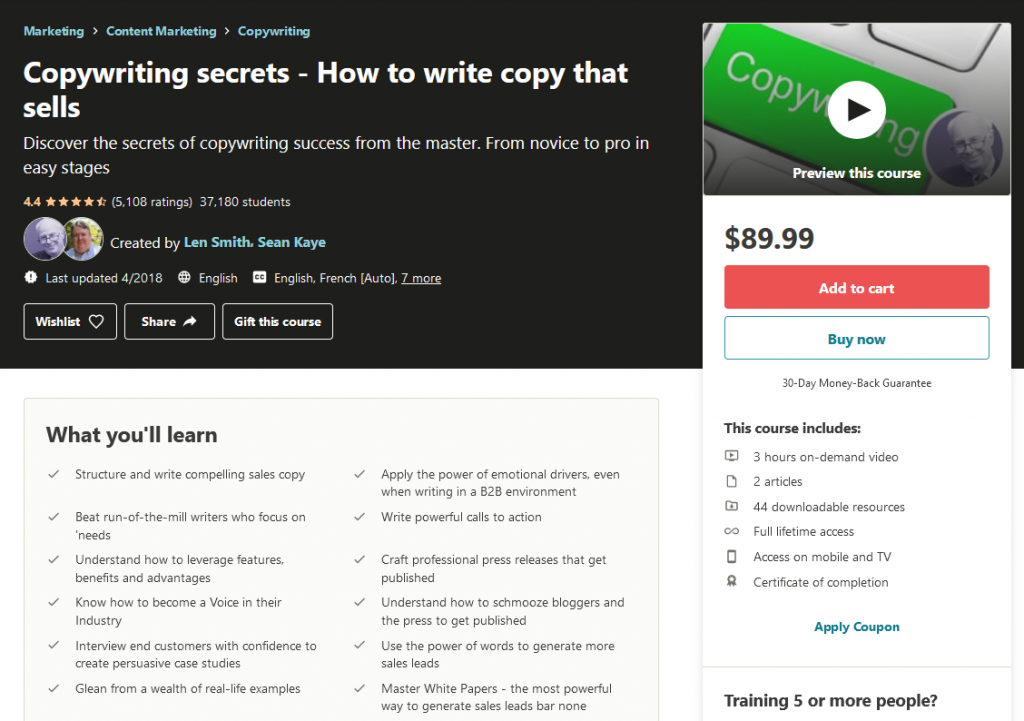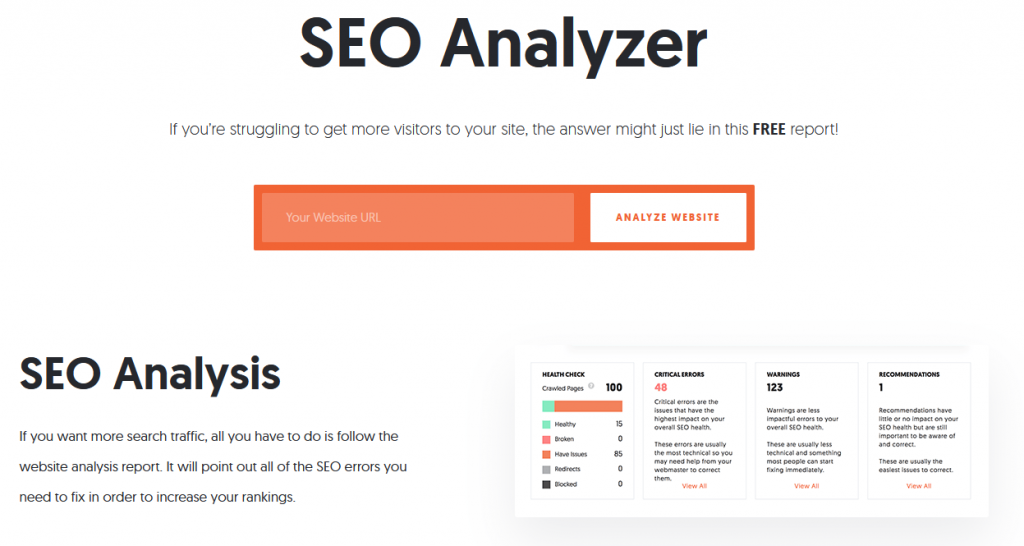7 Additional Revenue Streams to Help Designers and Developers Bring in Extra Cash

We are living in uncertain times. With working hours down 14% during the second quarter of 2020 because of COVID-19, employees, business owners, and freelancers alike are stressed out about the future. Sadly, 62% of small businesses have reported a general decrease in revenue:

As a designer or developer, you may have already noticed a dip in your income, or simply want to plan for the future. Therefore, it is sensible to consider different revenue streams. Read on and I’ll teach you several strategies you can use to bring in some much needed extra cash.
1. Get More Clients
If you’re a freelancer or small business owner, perhaps the simplest way to grow your income is to add more clients to your roster. As the owner of a web design agency, I spend a huge amount of my time on growing my company and trying to bring in new customers.
Blogging regularly, maintaining a visible presence on LinkedIn, attending conferences and events, and writing guest posts for relevant sites are just some of the ways I grow my client base. Here are a few ways you might want to consider to start getting more clients:
If you haven’t already, you might want to consider joining freelance marketplace sites such as Freelancer.com, Guru, or Upwork. You can join as many platforms as you want, but I suggest focusing on one or two. Build a great profile with a professional photograph, an impressive portfolio, and your contact information.
You’ll also want to step up your networking efforts if you are looking to land more clients. Spend time on LinkedIn, creating engaging content and interacting with others’ posts. When you encounter someone you’d like to work with, reach out and start a conversation.
You might also wish to join a networking group. Many are meeting online at the current time due to COVID-19, so don’t be limited by geography. Since you work digitally, you can work for clients anywhere in the world.
Events are still enormously beneficial in client acquisition. For example, our team visited the MD&M Trade Show in California, where several thousand companies we’d love to work with gathered for the world’s largest MedTech event.

It’s harder to attend events right now due to the pandemic, but many have moved online. If there is a virtual conference in your niche, make the time to attend. You’ll build contacts, make connections, and you might just meet your next ideal client. Remember to make a plan and figure out who you most want to meet – you can’t do everything, and having a plan will allow you to achieve your goals.
You could even host your own virtual event, such as a class, panel discussion, or webinar, or team up with someone else in your industry to run one. If it’s on an interesting and relevant topic, this can be a great way to get new prospects into your sales funnel. Here’s one I took part in earlier this year:

Finally, ask current and past clients for referrals. If they loved your services, they’ll be only too happy to tell their friends how amazing you are. Ideally, asking for referrals should be part of an organized and streamlined offboarding process. A robust offboarding process allows you to seamlessly transition at the end of a project, ensure the client is happy, and hand ownership of the project to them. Once all that is done, you can ask for testimonials and referrals.
2. Collaborate with Other Agencies or Providers
One way you can bring in extra cash is to offer additional services to clients. Design or web development might be your core skill, but what else are you good at? For example, you might wish to offer services such as hosting, SEO, or blogging. If you think about it, you might have other monetizable skills that you’re not using to their fullest potential.
Another, and perhaps even better, way to offer additional services is to collaborate with another agency or provider. You can send referrals their way in exchange for a commission, or white label their services. White labeling refers to a product or service provider removing their branding and instead of using the buyer’s branding. In other words, you sell on another company or provider’s services under your brand and take a cut of the money paid by the end client.
You don’t need to have the skillset to deliver extra services in order to profit from them. A commission rate of around 20% is standard in the agency space. Ensure you partner with an agency or provider that offers complementary, but not competing, services. So if you’re a web designer, you wouldn’t partner with a design agency, but you might partner with an SEO agency or web hosting provider.
This strategy has two key benefits: you’ll bring in commissions from each referral you make, and it will also help you acquire new customers through referrals.
3. Create a Blog
Blogging can be a fantastic way to generate additional revenue. Design and web development are highly technical areas, which means you probably have niche expertise. If you can write well, share your knowledge through a blog.
But be prepared: blogging isn’t a ticket to overnight income and it can take some work to get started. You’ll need to write regularly and optimize each post for relevant keywords if you want to drive significant traffic to your blog. If you want to earn a lot, you’ll probably also need to do some paid marketing in the form of pay-per-click (PPC) ads or paid social media ads.
Brain Dean, who founded Backlinko SEO blog, is an amazing resource for anyone looking to grow their business through blogging. His guide to writing a blog post will guide you through creating your content and his Grow Your Blog Fast course is available for those who are serious about blogging success.
Here’s a concrete example of how blogging can help your business. Two years ago, I wrote a blog post on the Lform blog about the 10 best web design agencies in NJ, where we’re based:

Thanks to this blog post and the links we’ve built to it, we now rank at the top of the organic Google search results for “NJ web design”. We’ve even secured a place in the coveted Google “3-pack”, a list of 3 top location-based search results:

Since 76% of people who conduct a local search contact a business within 24 hours, and 28% go on to buy, I cannot overstate the benefit this has had for us. In other words, that blog post has been absolutely critical in our client acquisition efforts. Imagine what just one or two high ranking posts could do for your business.
4. Sell a Course
If you have niche knowledge to share, you can make good money by building and selling online courses. For example, if you’re a web developer you could offer a course on web development trends for the upcoming year. If you’re a designer, why not offer a course on web design for a specific niche? And so on.
Here’s an example: copywriter Len Smith turned his book into the course “Copywriting Secrets: How to Write Copy That Sells” on Udemy. According to Neil Patel, this course earned over $3000 in two days when it first launched. Based on the course cost and the number of students who have taken it, it has likely brought in more than $3 million to date. Udemy takes a 50% cut of course fees, leaving around $1.5 million in profit.
One of the biggest benefits of online courses? You only need to create the course once, and then promote it and sell it again and again. It’s also a good idea to update the content once in a while to ensure it is still relevant. Please don’t misunderstand me, though, and think that selling a course is easy. It isn’t. But there are a few ways you can maximize your sales and
Make sure you’re offering truly useful information in a subject area you know a lot about. Make your content interactive and suggest exercises for participants to try out their new knowledge. Include downloadable resources. Leverage testimonials and reviews to show that your course is worth it – you can gather these by offering a small number of people access to your course for free in exchange for a review.
There are a lot of online courses out there, so you’ll want to stand out. If your course offers value for money, you’ll get great reviews and this will lead to more sign-ups in future.
Let’s take a look at how Smith does it so successfully:

Beneath the title and subheading, the first thing you see on the page is that the course has a great rating (4.4 stars out of 5) and has been taken by tens of thousands of students. This offers powerful social proof of its value. You don’t need thousands of reviews to get started, though – just a few will give you the credibility you need to start selling your course.
In addition, there’s a detailed breakdown of what you’ll learn on the course. Further down, you can read about the course leader’s experience and credentials. Remember to spell out why you’re the right person to teach this course and what your students stand to gain by investing money to learn from you.
You can use a platform like Udemy or Skillshare to create and host your e-learning material. If you prefer, you can also sell directly from your own website, but you’ll need to make sure you have a simple method of collecting payment and delivering the course materials.
5. Develop Products that Sell – and Sell Them
Have you ever wanted to invent something? You can generate additional revenue by creating products and selling them. If you go down this route, you’ll need to undertake market research to ensure there is sufficient demand for what you’d like to create and sell.
You don’t necessarily have to create a physical product, which can be expensive and present problems with storage and inventory. Digital products are highly saleable. Why not write an ebook, build an app, or create a new software solution?
You can sell your products through your website using an eCommerce solution such as Shopify or an alternative.
Another option is to create free extras, such as plugins or tools to support the CMS you specialize in. Creating valuable tools and giving them away for free is a great top-of-the-funnel business strategy to generate brand awareness and loyalty. If a customer loves your free product, they’re more likely to trust you enough to invest in your paid services.
Here’s an example:

SEO expert Neil Patel created a free SEO analysis tool that will give any user a completely free report on their website. This allows for new prospective customers to access his knowledge and expertise in a no-risk way. Then, if they like it and find it useful, they can move on to his paid services.
6. Create YouTube tutorials
If you have the knowledge to share and are confident in front of the camera, then YouTube could be the platform for you. You can create tutorials on all kinds of design and web development topics, and earn ad revenue from these videos. Creators can earn between $0.35 and $5 per thousand views. It doesn’t sound like a lot but, if you build up a strong following, you can bring in a few hundred dollars per month. In addition, you might be able to attract sponsorship deals with brands in your niche, where they pay you to showcase their products.
To create content that generates high numbers of views, you’ll need to make sure each video offers real value. Focus on useful advice and actionable takeaways. You could even group your videos into a coherent series of learning resources, covering a related topic in each video:

If you post videos regularly and start seeing high viewing figures, you can earn a nice side income from your Youtube channel.
Be aware that monetizing a Youtube channel is a long term strategy. If I started creating Youtube videos and building my audience today, I’d expect to start seeing cash coming in 6-12 months from now. However, if you persevere, the rewards can be substantial.
Additionally, a Youtube channel can be a great top-of-the-funnel strategy for bringing new prospective customers to your brand. If people find valuable content and actionable insights from your free Youtube content, they’ll likely think of you if they ever need the services you’re offering.
Generating Additional Revenue as a Designer or Developer
Designers and developers have highly marketable skills that can be used to generate income in a number of different ways.
A word of warning: don’t try to do everything on this list all at once! Choose one or two to focus on to begin with. The best option is the one that works for you and that you can do consistently. See which ideas appeal to you the most, and try those. Once things are going well, you can always scale your efforts or add more revenue streams later on.
Whichever option you choose, be patient. You might not start making money overnight. You’ll need to put the work in consistently if you want to see real results. Invest the time and effort, and your hard work will start paying off.
Photo by Per Lööv on Unsplash